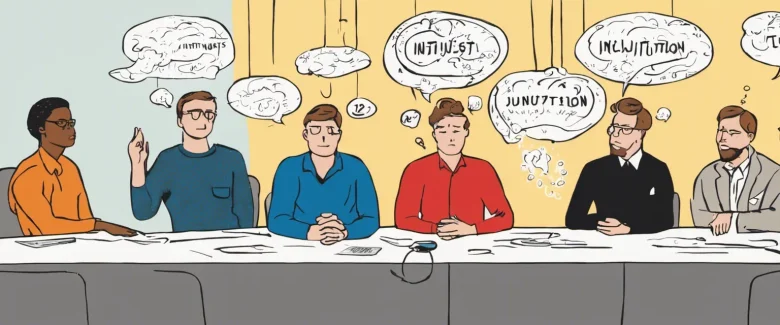In Bethany McLean‘s investigative masterpiece, “The Smartest Guys in the Room,” she delves into one of the most notorious corporate scandals in American history. This compelling narrative uncovers the rise and fall of Enron Corporation, a once-revered energy giant, led by a group of seemingly brilliant individuals who turned out to be anything but. McLean’s insightful account explores the intricate web of deceit, corruption, and unchecked ambition that ultimately led to Enron’s spectacular collapse and the devastating ripple effects it triggered throughout the financial world. As an accomplished journalist and writer, Bethany McLean has made a name for herself by fearlessly uncovering the truth behind complex financial scandals, earning her a reputation as a leading voice in business journalism.
Chapter 1: Enron’s Ascent
Chapter 1: Enron’s Ascent of The Smartest Guys in the Room begins with the story of Enron’s rise to prominence in the late 1990s. The chapter starts by introducing Enron as an energy company operating in Houston, Texas, with roots in pipeline construction. However, it quickly became apparent that Enron’s operations were far more complicated and diverse than a typical energy company.
The chapter highlights the key figures behind Enron’s success, in particular, CEO Jeff Skilling and chairman Kenneth Lay. Skilling was known for his intellect and ambition, while Lay was a respected and well-connected businessman. Together, they portrayed Enron as a company at the forefront of technological innovation, transforming the energy industry.
The chapter explores how Enron created new financial products, such as the creation of markets for natural gas and electricity, which allowed trading and speculation. Through complex financial structures, Enron was able to shift liabilities off its balance sheet, presenting a more favorable financial picture to investors and analysts.
The author delves into the background of Enron’s accounting and auditing practices. She stresses that while Enron’s financial statements appeared strong on the surface, there were underlying issues, such as the extensive use of mark-to-market accounting, which allowed the company to estimate future profits on long-term projects. This created a potential for manipulation and inflated earnings.
The chapter concludes by quoting Skilling, who claimed that Enron’s success was due to the company’s ability to anticipate and adapt to the changing marketplace. However, the author suggests that the company’s growth was primarily fueled by financial engineering, innovative accounting, and a culture of aggressive risk-taking.
Overall, Chapter 1 sets the stage for Enron’s journey, introducing the key players, their vision, and the questionable practices employed by the company that would ultimately lead to its downfall.
Chapter 2: The Energy Giant
Chapter 2: The Energy Giant of “The Smartest Guys in the Room” by Bethany McLean explores the rise and fall of Enron, a company that quickly transformed into an energy giant. This chapter introduces readers to the key players who would shape Enron’s trajectory and reveals the foundation of the company’s success.
Enron began in 1985 as an ordinary gas pipeline company with a modest vision. However, the bold ideas of Jeff Skilling and Kenneth Lay, the company’s CEO, launched Enron into new ventures, primarily speculative trading of energy commodities. They believed that Enron could control the distribution of energy as other companies had done with oil.
The chapter highlights important events that fueled Enron’s growth, such as the deregulation of natural gas, which allowed Enron to thrive in unregulated markets. Skilling’s vision gave birth to Enron’s unique business model, transforming the company into an energy trading hub where profit was generated from the trading itself, rather than the physical assets. This approach attracted investors and analysts who saw Enron as an innovative force.
The narrative also introduces other influential figures like Rebecca Mark, who played a crucial role in expanding Enron’s global reach, and Andrew Fastow, who developed financial structures to hide Enron’s debt, creating a false facade of success. The chapter concludes with Enron’s successful initial public offering (IPO) in 1996, which raised millions of dollars and solidified Enron’s position as a leading energy company.
Overall, Chapter 2 of “The Smartest Guys in the Room” illustrates how Enron’s energy trading model, combined with skilled executives’ ingenuity, propelled the company to staggering heights. However, beneath this seemingly impressive façade, Enron was building a tangled web of financial deception, setting the stage for its eventual downfall.
Chapter 3: The Innovative Culture
Chapter 3 of The Smartest Guys in the Room by Bethany McLean focuses on the innovative culture that developed at Enron, one of the largest energy companies in the United States. This chapter examines the company’s unique approach to business and how it ultimately played a crucial role in their downfall.
Enron’s corporate culture was based on pushing boundaries and challenging traditional norms. The company encouraged its employees to take risks and rewarded those who came up with innovative ideas. This culture attracted ambitious, young professionals who were attracted by the potential for high financial rewards. Enron was known for its intense and competitive work environment, implementing performance reviews and rankings that fueled employees’ desire to climb the corporate ladder.
The company’s leaders, including CEO Jeff Skilling, promoted the idea that they could innovate their way out of any problem. Enron executives believed that they could create entirely new markets and reshape the energy industry. This led them to develop complex financial instruments, such as special purpose entities (SPEs), that allowed the company to shift debt off its balance sheet. These innovative financial structures were utilized to hide losses and create an illusion of profitability.
Enron’s culture of innovation, however, also bred an atmosphere of arrogance and rationalization. The company’s employees were encouraged to bend the rules and take advantage of loopholes in order to maximize profits. This mentality eventually led to fraudulent practices and the collapse of Enron.
In summary, Chapter 3 highlights the innovative culture that thrived at Enron, fueled by a desire to challenge traditional norms and create new markets. This culture ultimately allowed the company to exploit loopholes and engage in fraudulent practices, leading to its demise.
Chapter 4: Financial Engineering

Chapter 4 of “The Smartest Guys in the Room” by Bethany McLean delves into the concept of financial engineering and its role in the rise and fall of Enron. Financial engineering refers to the creative manipulation of accounting rules and financial structures to shape a company’s financial statements, making them appear healthier than they truly are.
The chapter begins by highlighting the role of Enron’s Chief Financial Officer (CFO), Andrew Fastow, in leading the charge of financial engineering. Fastow executed a series of complex transactions known as Special Purpose Entities (SPEs) to hide Enron’s debt and losses from its investors and regulators effectively.
The chapter then explores the complexity of these SPEs and how they were used to manipulate financial statements. Rather than presenting them as liabilities on their balance sheet, Fastow and his team represented them as independent entities, allowing Enron to maintain its strong financial position on paper while obscuring its deteriorating reality. Additionally, Enron used deceptive accounting techniques, such as mark-to-market accounting, to project future earnings based on expectations rather than actual results.
McLean emphasizes the complicity of auditors and rating agencies in enabling Enron’s financial engineering. The auditors, Arthur Andersen, turned a blind eye to these questionable practices, ultimately making them part of the problem rather than the solution. Similarly, rating agencies failed to raise any red flags or conduct thorough due diligence on Enron’s financial health.
The chapter concludes with the downfall of Enron as the impacts of their financial engineering practices unravel. Enron’s fragile structure eventually collapsed due to mounting debt, hidden losses, and a lack of investor confidence. The subsequent bankruptcy of Enron sent shockwaves through the financial community, prompting investigations and regulatory reforms to prevent such fraudulent practices in the future.
In summary, Chapter 4 of “The Smartest Guys in the Room” sheds light on Enron’s elaborate financial engineering practices, specifically involving SPEs, deceptive accounting methods, and the complicity of auditors and rating agencies. It highlights how these techniques masked Enron’s true financial status until its eventual downfall.
Chapter 5: Dark Side of Success
Chapter 5 of “The Smartest Guys in the Room” by Bethany McLean is titled “Dark Side of Success” and focuses on Enron’s increasing arrogance and the fraudulent practices that were conducted to maintain their illusion of success.
The chapter begins by highlighting Enron’s growing influence and power when they successfully lobbied for the deregulation of the electricity market in California. This allowed Enron to manipulate energy prices, leading to astronomical profits and reinforcing their image as a brilliant and invincible company. Enron’s CEO, Jeff Skilling, was known for his arrogant and aggressive attitude, constantly promoting a culture of winners and losers within the company.
However, the chapter slowly unveils the dark secrets behind Enron’s success. The company’s financial practices were highly questionable, as they used shady accounting techniques to hide debt and inflate their profits. Financial statements were purposefully manipulated and complex deals with offshore special purpose entities were structured to divert losses and make them appear as profits.
Furthermore, the chapter delves into Enron’s creation of Raptors, which were off-balance-sheet entities that were supposed to protect the company against potential losses. In reality, these entities were used to push Enron’s debt off the books and maintain their high credit ratings. The dangerous consequences of these deceptive practices became evident when Enron’s stock began to decline rapidly.
Overall, the chapter exposes how Enron’s success was built on a foundation of deceit, arrogance, and unethical financial practices. It paints a vivid picture of how Enron’s leaders manipulated the system, ultimately leading to their downfall. This chapter serves as a warning about the dangers of unchecked corporate power and the devastating consequences of unethical behavior.
Chapter 6: The Truth Unveiled
Summary:
In Chapter 6 of “The Smartest Guys in the Room” by Bethany McLean, titled “The Truth Unveiled,” the author dives into the unraveling secrets and revelations surrounding the infamous energy company, Enron.
The chapter begins with the exposure of Enron’s financial misdeeds by journalist Bethany McLean. McLean, suspicious of Enron’s soaring success and inflated stock prices, starts digging deeper into the company’s financial statements. She uncovers various questionable partnerships and complex accounting tricks used by Enron to hide debt and inflate profits.
One of the key revelations centers around Enron’s use of special-purpose entities (SPEs), which were off-balance-sheet entities designed to give the illusion of reduced debt. McLean explains how these entities were kept hidden from investors and auditors, allowing Enron to artificially boost its reported earnings. Furthermore, Enron’s top executives, such as Andrew Fastow, the company’s CFO, used these SPEs for their personal financial gain, profiting millions from the company’s demise.
Additionally, McLean uncovers the manipulative role played by Enron’s auditors, Arthur Andersen, who overlooked major irregularities and failed to provide an accurate representation of Enron’s financial health. The author highlights the auditors’ ethical dilemma, torn between maintaining a lucrative client and reporting the truth, eventually leading to Arthur Andersen’s near-collapse due to their involvement in the Enron scandal.
As details of Enron’s deceitful practices start to become public, the company’s stock price plummets, instilling panic among shareholders and employees. Media attention intensifies, and Enron’s CEO, Jeff Skilling, makes several public appearances defending the company’s actions, claiming Enron has been misunderstood.
In summary, Chapter 6 of “The Smartest Guys in the Room” exposes Enron’s intricate web of deception, showcasing how the company used complex financial maneuvers and questionable partnerships to mask huge debts and inflate earnings. McLean’s investigation, combined with media scrutiny and public skepticism, gradually chips away at Enron’s cunning facade, revealing the truth and setting the stage for the collapse of one of America’s biggest corporate scandals.
Chapter 7: Collapse and Scandal
In Chapter 7 of “The Smartest Guys in the Room” by Bethany McLean, she delves into the events leading up to the collapse and scandal of one of the largest corporations in history, Enron. The chapter provides a summary of how Enron’s overly aggressive accounting, coupled with a culture of dishonesty and excessive risk-taking, ultimately brought the company to its knees.
At the heart of Enron’s collapse was its elaborate web of off-balance-sheet partnerships, such as Chewco, LJM, and Raptor. These partnerships were created to help Enron hide its mounting debt and losses, ensuring that the company appeared far more profitable than it truly was. Throughout the chapter, McLean exposes the complexities and outright fraud underlying these partnerships, which allowed Enron to manipulate its earnings, deceive investors, and inflate its stock price.
Furthermore, Enron’s top executives, particularly then-CEO Jeff Skilling and CFO Andrew Fastow, played pivotal roles in the company’s downfall. Skilling’s ruthless management style fostered a culture where employees were encouraged to take excessive risks, and those who disagreed or questioned the company’s practices were swiftly dismissed.
Fastow, on the other hand, was the mastermind behind the partnerships, exploiting loopholes in accounting regulations to personally profit from Enron’s financial manipulations. As the web of deception became increasingly complex, it was only a matter of time before Enron’s public image unraveled.
The chapter concludes with the revelation that the Securities and Exchange Commission (SEC) had launched an investigation into Enron’s accounting practices. As the investigation intensified, questions of legality and ethics surrounded the company, leading to growing concerns among investors and the eventual collapse of Enron.
In essence, Chapter 7 highlights how Enron’s aggressive accounting practices, coupled with a corporate culture that prioritized deceit, ultimately led to its financial collapse and the subsequent scandal that shook the business world.

Chapter 8: Aftermath and Lessons Learned
Chapter 8 of “The Smartest Guys in the Room” by Bethany McLean, titled “Aftermath and Lessons Learned,” delves into the events that took place after the collapse of Enron and reflects on the lessons that can be gleaned from this catastrophic downfall.
The chapter opens with the shocking revelation that Jeffrey Skilling and Kenneth Lay, the former Enron CEOs, are indicted in 2004. This news marks a turning point in the Enron scandal, as it signifies the accountability of the company’s top executives. Additionally, it sheds light on the extent of the fraud and deceit that had been conducted within the organization.
McLean further highlights the trial and ultimate conviction of Skilling and Lay, illustrating the downfall of these once-powerful men. She also examines the consequences faced by other Enron executives, including Andrew Fastow, the CFO responsible for orchestrating the fraudulent financial schemes. Numerous former executives receive prison sentences, emphasizing the criminal nature of their actions and the significant impact the scandal had on their lives.
Moreover, the chapter emphasizes the broader lessons that can be drawn from the collapse of Enron. McLean discusses the importance of corporate culture and the institutions that govern it, emphasizing the need for transparency and accountability at all levels. She argues that the Enron scandal showcased failings in regulatory oversight and the desperate need for corporate reform.
In conclusion, chapter 8 of “The Smartest Guys in the Room” demonstrates the aftermath of the Enron scandal, from the legal consequences faced by the top executives to the broader lessons learned. It serves as a reminder of the devastating effects that corporate fraud can have on individuals, the economy, and public trust.
After Reading
In conclusion, “The Smartest Guys in the Room” by Bethany McLean provides a gripping account of the rise and fall of Enron, one of the most notorious corporate scandals in history. McLean, through extensive research and interviews, exposes the complex web of deceit and greed that led to Enron’s downfall. The book serves as a cautionary tale, highlighting the dangers of unchecked corporate power and the importance of ethical business practices. McLean’s detailed narrative and insightful analysis shed light on the individuals involved, painting a stark picture of ambition, corruption, and the devastating consequences of unrestrained ambition. Overall, “The Smartest Guys in the Room” is a thought-provoking and compelling examination of corporate hubris and the heights to which individuals will go in pursuit of wealth and success.
1. How the Mighty Fall by James C. Collins: This book provides valuable insights into the reasons behind the decline of once-successful companies. Collins explores the stages of decline and offers practical advice on how leaders can recognize and prevent their organizations from falling. It is a must-read for anyone interested in understanding the warning signs of failure and how to navigate through challenging times.
2. Winning by Jack Welch: In this book, the legendary CEO of General Electric shares his experiences and strategies for success in the business world. Welch covers a wide range of topics, including leadership, talent management, and competitive advantage. His candid and practical advice makes this book a valuable resource for aspiring leaders looking to make an impact in their careers.
3. The Hard Thing About Hard Things by Ben Horowitz: Horowitz, a successful entrepreneur, shares his journey of building and managing businesses through tough times. This book provides invaluable insights into the challenges faced by leaders and offers practical advice on making difficult decisions. It is a raw and honest account that resonates with anyone navigating the complexities of business and leadership.
4. Good to Great by Jim Collins: Drawing from extensive research, Collins explores what differentiates truly great companies from the rest. He identifies key principles and characteristics that lead to sustained excellence and provides actionable strategies to implement these findings. This book is a must-read for leaders aiming to propel their organizations from good to great.
5. Creativity, Inc. by Ed Catmull: Catmull, a co-founder of Pixar Animation Studios, takes readers inside the world of creativity and innovation. He shares the practices and principles that allowed Pixar to become one of the most successful animation studios in history. This book offers valuable lessons on fostering a creative culture, managing teams, and overcoming obstacles encountered during the creative process.
Note: As requested, the book The Smartest Guys in the Room by Bethany McLean has not been included in this recommendation.




Comments
Tyra Banks, Cara Delevingne, Karlie Kloss Leaked Sextape Nudes Only Fans( https://UrbanCrocSpot.org/ )